Lotus 49: Revolutionary car with era-defining engine
Our search for the greatest car of the last 100 years shifts to the ’60s. Gordon Cruickshank presents the case for the Lotus 49

A menagerie of F1 masters have taken the chequered flag in the Lotus 49, including Jim Clark, Graham Hill and Jochen Rindt
Getty Images
The Lotus 49 has been voted Motor Sport’s Race Car of the Century. Read more about the results from our reader vote and its announcement at our 100th Anniversary Gala.
5 1960s Lotus 49
“We’ll put the bolts just far enough apart for Jim’s bum to fit between.” Such was journo Jabby Crombac’s claim about the dovetailing between Lotus and Cosworth over spacing the lower engine mounting bolts on the DFV and its intended first home, the engine bay of the Lotus 49. Whether true or not that Jim Clark’s rump mattered, the result was a revolutionary car and an era-defining engine.
Why did that dovetailing matter? Because essentially the two engineering wizards were each designing half the car. There was no chassis behind Clark’s back: the rear suspension bolted directly onto the new power unit, which was fixed in turn onto the rear face of the new monocoque. A union made in heaven. The debut was heavenly too: Zandvoort, Dutch Grand Prix 1967, third round of the championship. Trumpeting that V8 engine note which would soon be so familiar, Graham Hill topped the grid and Jim Clark took the win. In Motor Sport, Denis Jenkinson said he thought it was the first time an all-new, stem to stern design had won first time out since 1954 and the Mercedes W196. The Lotus-DFV 49 would go on to win the 1968 title and with many an update race on into the 1970 season.
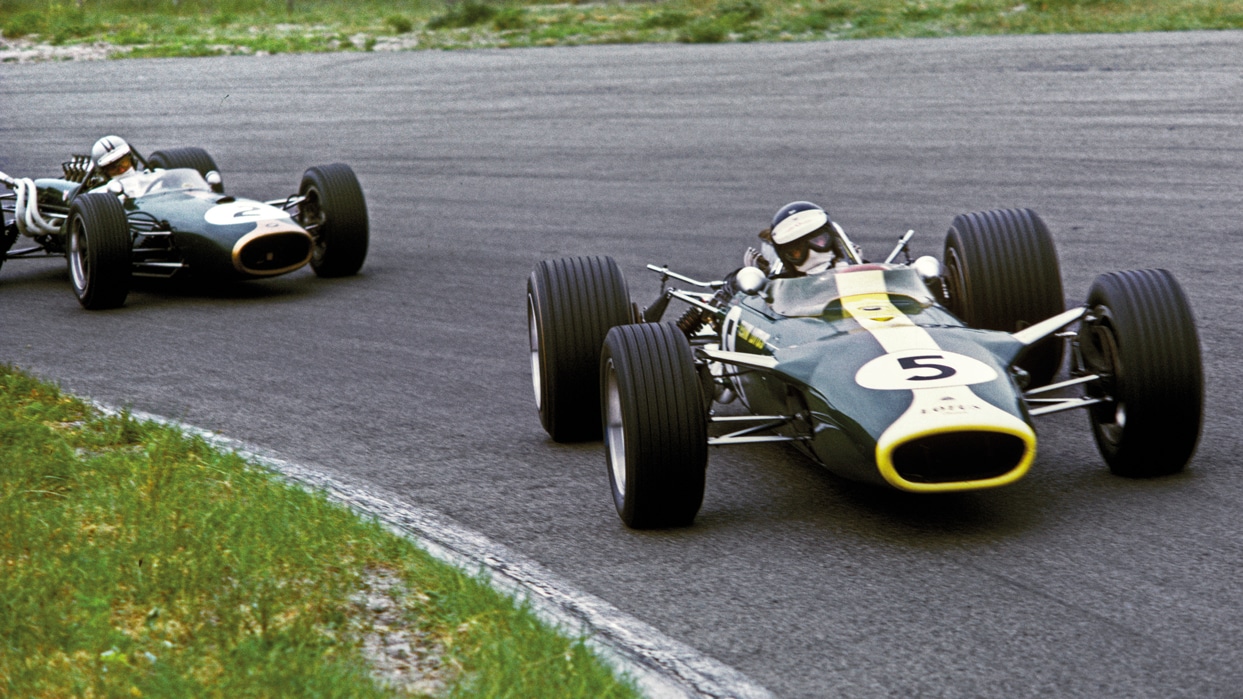
The 49 made an instant mark on its debut at the Dutch GP in 1967
Getty Images
Just as with his first proper monocoque, the 25, Colin Chapman had once again made everything else obsolete. From here on you had to field a car with the same architecture, and unless you built your own engines you wanted that Cosworth engine forming the rear half of it. It wasn’t a uniquely Lotus unit; originally the team had exclusive use for two seasons, but for 1968 Chapman agreed the engineering firm could sell it to allcomers. It would go on to score an astonishing 155 grand prix victories and power dozens of different chassis until the turbos blew it into history.
And the Lotus element? What was so significant? First point: while Chapman’s was the blue-sky thought, it was Team Lotus chief designer Maurice Philippe who brought it to reality, scheming a neat monocoque using proven suspension components – rocker-arm front end with inboard coil/shock and leading link, with transverse top links, reversed lower wishbones and radius arms behind. If you’re planning a revolutionary concept you don’t want to change everything at once. But it was the seamless integration of power and chassis that changed everything. Through ’66, first year of the new 3-litre formula, Lotus had struggled with the hefty BRM H16, the white elephant in the engine room, and Chapman knew he needed a new power source. Having worked with Cosworth on tuned Ford units he trusted Keith Duckworth and Mike Costin, both ex-Lotus, to build a powerful F1 unit, but it needed a £100,000 seed corn from Ford to make it happen. For the next 25 years and more, DFV cam covers carried the Ford name to circuits worldwide.
Crucially, the DFV was not only compact, light and rigid, it was also powerful, hitting the grid with 400bhp at 9000 revs, on par with the heavier Ferrari and Weslake V12s and healthily up on Cooper’s venerable Maserati V12 and Brabham’s brawny Repco V8. And if the torque arrived with a 6500rpm bang that didn’t suit Clark’s delicate style, well, Cosworth would soon smooth that out.
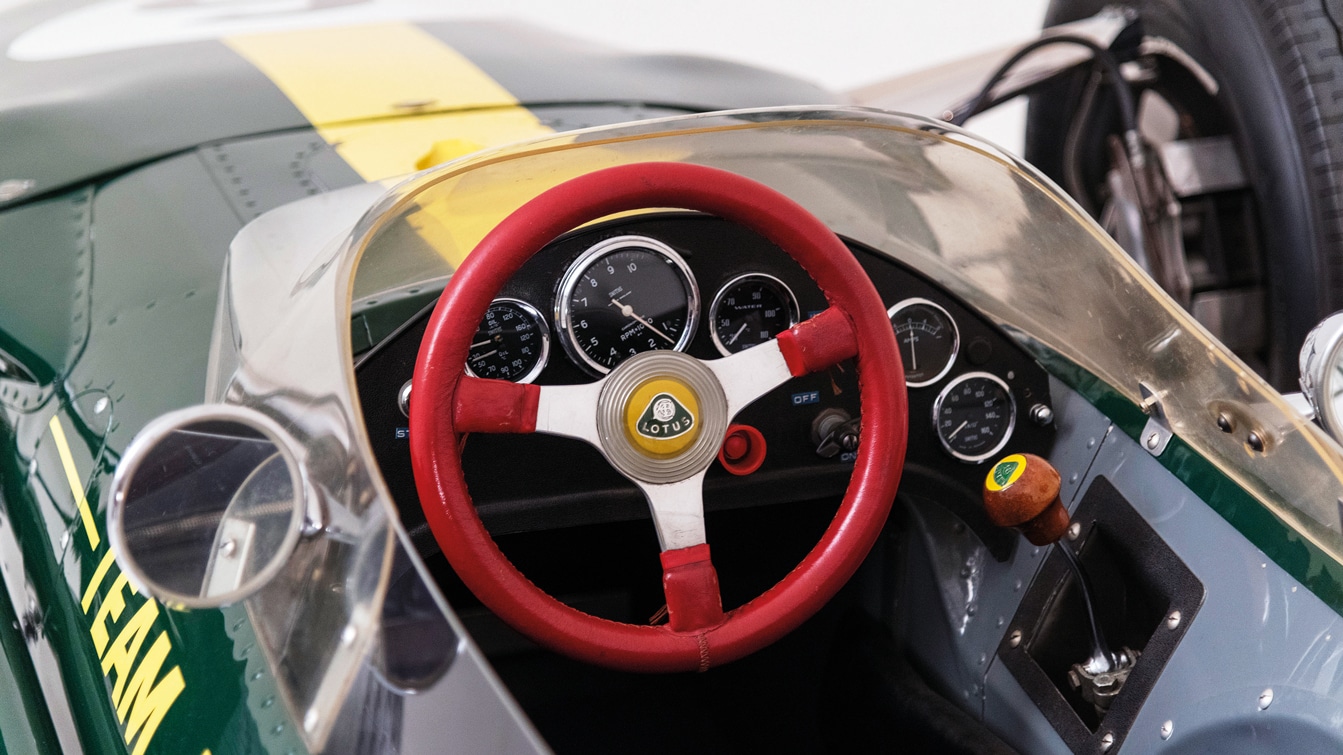
Chassis R3 at the National Motor Museum
Getty Images
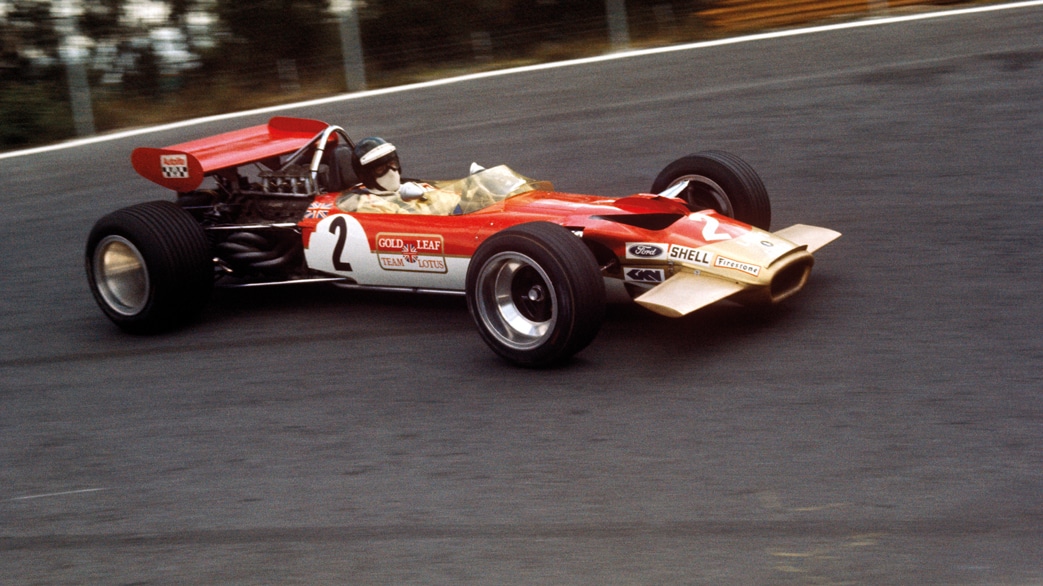
Rindt’s first F1 win came at Watkins Glen in a 49B, 1969
Getty Images
This wasn’t the first chassis to utilise a fully stressed engine to carry the rear suspension loads. Chapman’s 43 had tried it with that bulky H16; even Lancia as far back as 1954. But here the integration was perfect: the rear suspension arms bolted to block, cam chests and ZF gearbox while the paired radius arm fed loads directly to the slim, stiff monocoque, so tight around the driver it needed an indent to clear driver elbows. Cross-sectional area was pared to the minimum, the profile of the engine – aerodynamics were still all about penetration, not downforce – so the entire package was scarcely larger than the 1.5-litre predecessor 33. Down to the pencil nose and small radiator only the wishbones projected beyond the glassfibre body; aft of the rear bulkhead there was – nothing. No chassis and no bodywork – airflow over the engine and its convoluted exhaust system was inevitably messy in any case: why add the weight of a cover, which would only restrict access?
“Rival teams stared as the green and yellow machine was unloaded that weekend”
Rival teams stared as the green and yellow machine was unloaded that weekend at Zandvoort, then whipped out their notebooks. From here on the fully stressed engine would rule; in a couple of seasons three-quarters of the grid would employ the DFV package, and by then despite updates the 49 was falling behind. Chapman’s next big idea, the 4WD Type 63, proved less of a giant leap than a troublesome cul-de-sac, and it fell to the trusty 49 in C spec to carry Hethel’s hopes into 1970.
For such a significant machine the results on paper don’t fully reflect its abilities. In its first season it took four victories and every pole position it contested – and posted a slew of failures. Timing gears, half-shafts, gearbox – time and again assured victories slipped from the team’s grasp, handing the drivers’ title to Denny Hulme and his Brabham-Repco, but by season’s end the car was honed, hungry and heading south for the Tasman Series. Equipped with a 2.5-litre short-stroke DFV Clark scooped the title, then, suntanned and confident, he and Hill headed home for the ’68 assault.
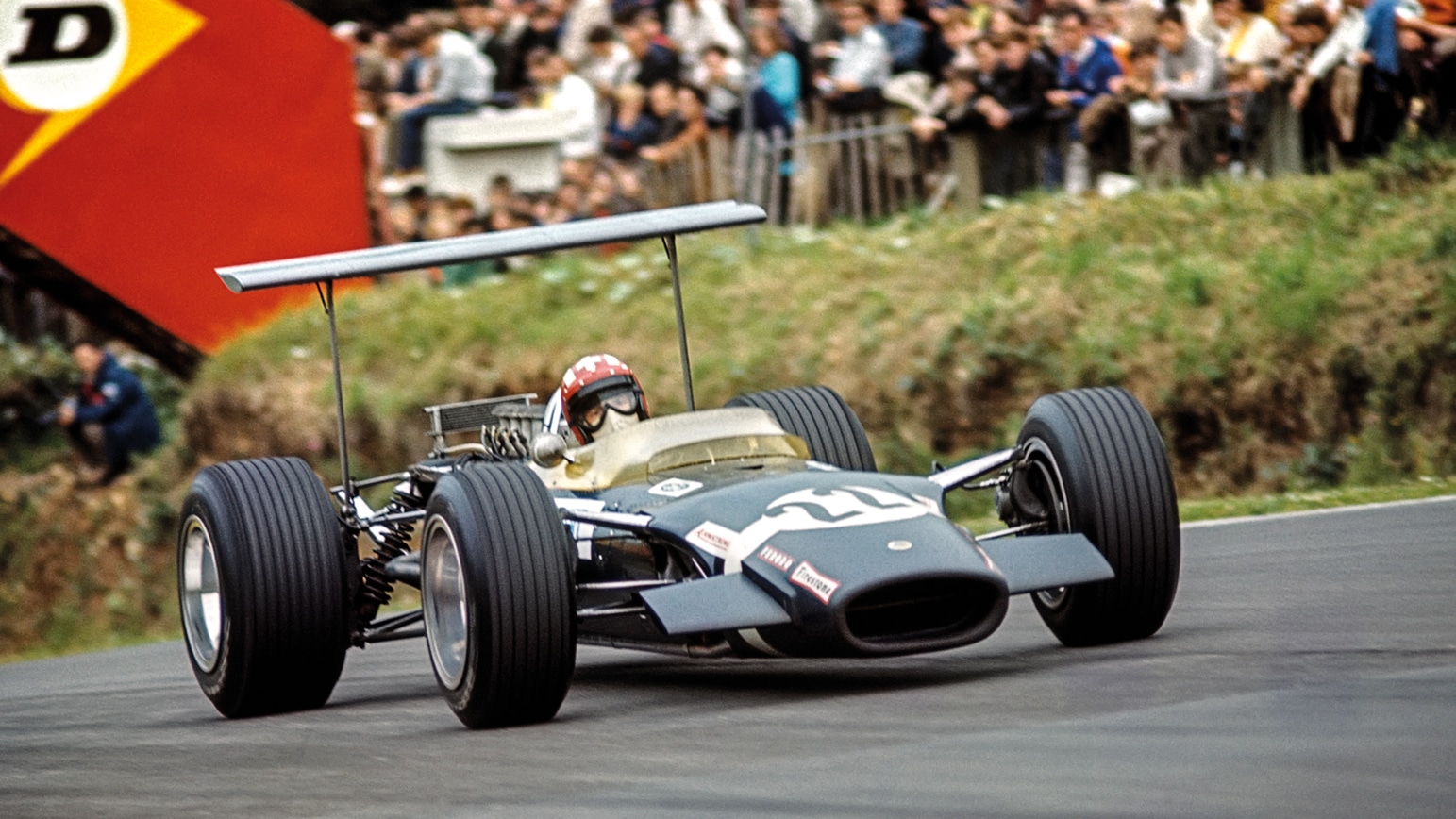
Jo Siffert found wings at the 1968 British GP, Brands Hatch
Getty Images
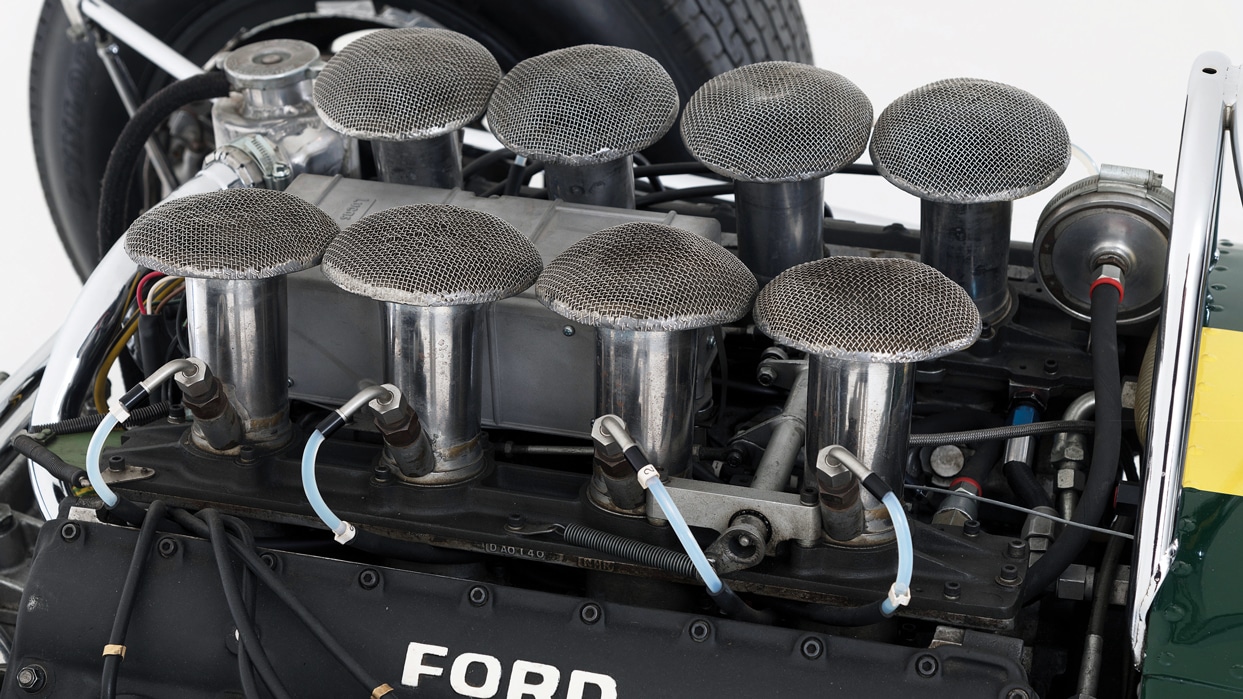
The eight-pot heart of the 49
Getty Images
During 1968 Team Lotus upgraded the 49 to B spec: longer wheelbase, Hewland ’box, and aero experiments from duck tail to those wings on stilts that would later cause some horrendous accidents.
But both 1968 titles would fall to Lotus in new red and white Gold Leaf livery, though not to Clark as most expected. In the wake of the master’s fatal crash Graham Hill stepped up for the laurels, with three victories – Spain, Monaco (his fourth of five wins in the principality) and Mexico, backed by Jo Siffert’s Brands Hatch win in Rob Walker’s 49B. Meanwhile Cosworth production had ramped up enough to allow McLaren and Tyrrell to fit the new wonder motor, bringing a win apiece in the non-championship Gold Cup and Daily Express events plus three for Jackie Stewart’s Matra-chassised Tyrrell-DFV.
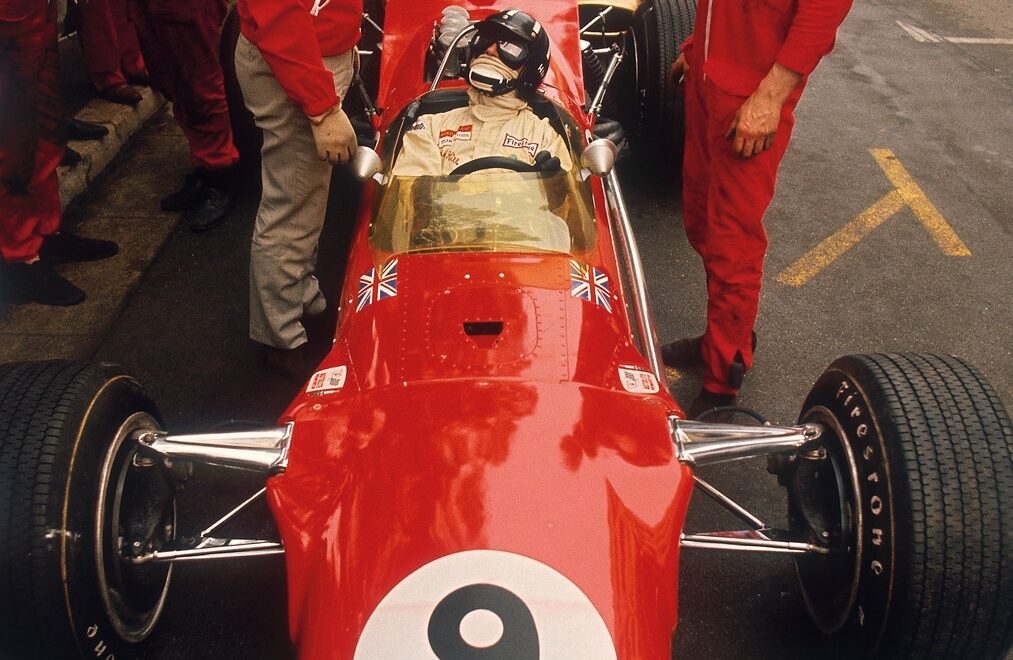
Graham Hill earnt pole and the race win at the 1968 Monaco Grand Prix in the Gold Leaf-liveried 49
Getty Images
There would still be victories in 1969 and even in 1970 including Hill’s second Monaco in the same chassis, but eventually every bright star wanes. The Lotus 49 was a star which blazingly illuminated a new path for Formula 1 design.
MS verdict: Coupled with Cosworth’s DFV, this was a monocoque masterpiece.
